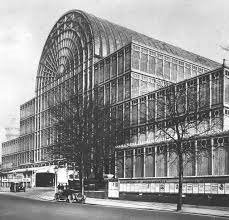
The dark night of humanity
Watching political debates or even relevant issues of public life, a brief look at culture and religion, any angle that looks at the moment aggravated by the pandemic, it is relevant to point out the confused features of this civilizing moment.
culture and religion, any angle that looks at the moment aggravated by the pandemic, it is relevant to point out the confused features of this civilizing moment.
It is a fact that we have already been through another pandemic, in frightening numbers the so-called “Spanish flu” in the middle of the 1st. world war, it was a great and humanitarian disaster that challenged humanity, and even then came the second war, the concentration camps and the Hiroshima bomb, but the contours of this moment seem even more serious, there is a crisis of thought.
What can be observed are phrases made with a doubtful impact, appeals to impossible optimism in the face of the pandemic scenario or the hope “after all this is over”, however as the vaccine does not reach reality it imposes it, even on the wise on duty a little sobriety, but still without the solidarity and humanity that would be desirable.
The crisis of thought already pointed out by Edgar Morin, Nicolescu Barsarab and many others, in addition to the scientific and technical debate, is the difficulty of composing elements that should go beyond the limits of specialties to solve problems beyond the disease, the social and the religious, to tackle the problem together would require an overall view and not an impoverished disciplinary view of specialists.
When less is seen by pure and simple analysis, the darker this night becomes, the foundations lost, even if the civilizing foundations can be overcome: the Greek culture, the Judeo-Christian religiosity that so many scholars had, also the Islamic with Avicenna, Averroes, Al-Khwarismi and more recently Abdus Salam, who won the Nobel Prize in Physics in 1979.
Science is still strongly linked to the positivism and logicism of two centuries ago, while Karl Popper, Tomas Kuhn or Bachelard are still little known and confined in circles of “experts of the scientific method” which indicates a shallow reading of these questioners of conventional science.
The last century gave us Gustave Klimpt, Pablo Picasso, Henri Matisse, Salvador Dali, the bold architecture of Antoni Gaudi, by Brazilian Oscar Niemeyer, but the straight façades, the abuse of glass and crystals that appear for the first time in the Crystal Palace (photo), English architectural structure of the 19th century that invoked a recreation center for “education of the people”, cited by Sloterdijk and his disciple Byung Chul Han as representative of current architecture, as centers of consumption and “an architectural form was proclaimed as the key to capitalism . condition of the world ”(SLOTERDIJK, 2005, P. 279).
The Creator’s greatness and daily novelty are a stark contrast to repetitive, outdated religions that say nothing to the world today, about the pandemic oscillating between simple adherence to current discourse to models of solidarity and defense of life that are too fragile for tragedy pandemic.
SLOTERIJK, P. Crystal Palace, Chapter 33 of in Globalen Inneren Raum des Kapitals: Für eine philosophische Theorie der Globalisierung (In the Global Inner Space of Capital: For a Philosophical Theory of Globalization). Frankfurt am Main: Suhrkamp, 2005, pg. 265-276.









